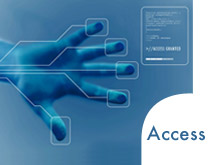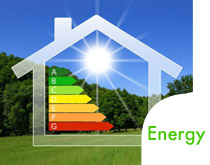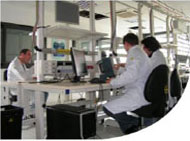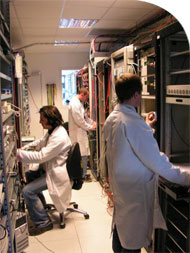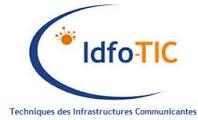Tests K20 K21 K45
The ITU-T K.20, K.21 et K.45 recommendations provides a set of test methods and protection criteria to overvoltages and overcurrents of telecommunication equipments. Three types of tests are defined: Lightning Surge, Power induction, and Power Contact.
• K.20 tests the resistibility of equipments installed in a telecommunications centre,
• K.21 tests the resistibility of equipments installed in customer premises,
• K.45 tests the resistibility of equipments installed in the access and trunk networks.
These recommendations concern all types of equipment connected to the phone network. This network can be expanding to private networks, like intercom or remote control…
| 2a | Lightning test conditions for ports connected to external symmetric pair cables |
| 2.1.1a | Single port, lightning, inherent, transverse |
| 2.1.1b | Single port, lightning, inherent, port to earth |
| 2.1.1c | Single port, lightning, inherent, port to external port |
| 2.1.2a | Single port, lightning, coordination, transverse |
| 2.1.2b | Single port, lightning, coordination, port to earth |
| 2.1.2c | Single port, lightning, coordination, port to external port |
| 2.1.3a | Multiple port, lightning, inherent, port to earth |
| 2.1.3b | Multiple port, lightning, inherent, port to external port |
| 2.1.4a | Multiple port, lightning, port to earth |
| 2.1.4b | Multiple port, lightning, port to earth, port to external port |
| 2.1.5a | Single port, lightning, current, port to earth |
| 2.1.5b | Single port, lightning, current, port to external port |
| 2.1.6a | Multiple port, lightning, current, port to earth |
| 2.1.6b | Multiple port, lightning, current, port to external port |
| 2b | Power induction and earth potential rise test conditions for ports connected to external symmetric pair cables |
| 2.2.1a | Power induction, inherent, transverse |
| 2.2.1b | Power induction inherent and earth potential rise, port to earth |
| 2.2.1c | Power induction inherent and earth potential rise, port to external port |
| 2.2.2a | Power induction, inherent/coordination, transverse |
| 2.2.2b | Power induction and earth potential rise, inherent/coordination, port to earth |
| 2.2.2c | Power induction and earth potential rise, inherent/coordination, port to external port |
| 2.3.1a | Mains power contact inherent, transverse |
| 2.3.1b | Mains power contact inherent, port to earth |
| 2.3.1c | Mains power contact inherent, port to external port |
| 4a | Lightning test conditions for ports connected to external d.c. or a.c. dedicated power feeding cables |
| 4.1.1a | Single port, lightning, inherent, transverse |
| 4.1.1b | Single port, lightning, inherent, port to earth |
| 4.1.1c | Single port, lightning, inherent, port to external port |
| 4.1.2a | Single port, lightning, coordination, transverse |
| 4.1.2b | Single port, lightning, coordination, port to earth |
| 4.1.2c | Single port, lightning, coordination, port to external port |
| 4.1.3 | Multiple port, lightning, inherent, port to earth and port to external port |
| 4.1.4 | Multiple port, lightning, port to earth and port to external port |
| 4.1.5a | Single port, lightning, current, port to earth |
| 4.1.5b | Single port, lightning, current, port to external port |
| 4.1.6 | Multiple port, lightning, current |
| 4b | Power induction and earth potential rise test conditions for ports connected to external d.c. or a.c. dedicated power feeding cables |
| 4.2.1a | Power induction, inherent, transverse |
| 4.2.1b | Power induction and earth potentialrise, inherent, port to earth |
| 4.2.1c | Power induction and earth potential rise, inherent, port to external port |
| 4.2.2a | Power induction, inherent/coordination, transverse |
| 4.2.2b | Power induction and earth potential rise, inherent/coordination, port to earth |
| 4.2.2c | Power induction and earth potential rise, inherent/coordination, port to external port |
| 4.3.1a | Mains power contact, inherent, transverse |
| 4.3.1b | Mains power contact, inherent, port to earth |
| 4.3.1c | Mains power contact, inherent, port to external port |
| 5 | Test conditions for mains power ports |
| 5.1.1a | Lightning, inherent, transverse |
| 5.1.1b | Lightning, inherent, port to earth |
| 5.1.1c | Lightning, inherent, port to external port |
| 5.1.2a | Lightning, inherent/coordination |
| 5.1.2b | Lightning, inherent/coordination port to earth |
| 5.1.2c | Lightning, inherent/coordination port to external port |
| 5.2.1 | Earth potential rise |
| 5.2.2a | Neutral potential rise, inherent, port to earth |
| 5.2.2b | Neutral potential rise, inherent, port to external port |
| 6 | Test conditions for ESD applied to the enclosure |
| 6.1a | Air discharge |
| 6.1b | Contact discharge |
| 7 | Lightning test conditions for ports connected to internal cables |
| 7.1 | Unshielded cable |
| 7.2 | Shielded cable |
| 7.3 | Floating d.c. power interface |
| 7.4 | Earthed d.c. power interface |

